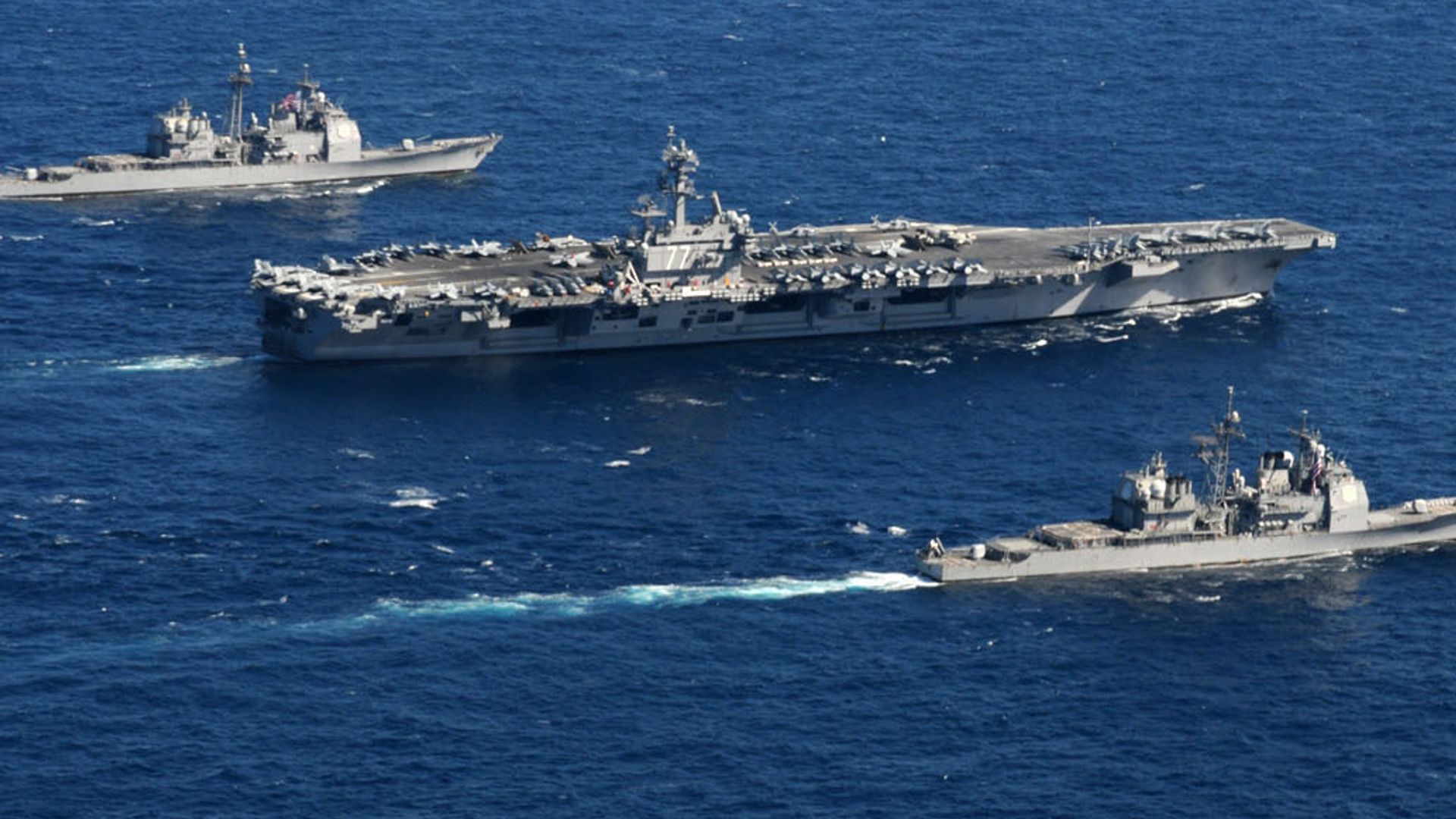
[RYAN ROBERTSON]
THE UNITED STATES NAVY IS AN ELITE MARITIME FORCE. ITS CARRIER STRIKE GROUPS PROJECT AMERICAN POWER AROUND THE WORLD, PROTECT GLOBAL SHIPPING LANES, AND OFFER HUMANITARIAN AID DURING DISASTERS. BUT EVEN THE BEST NEED TO TAKE A BREAK, WHICH IS WHY THE NAVY IS EXPERIMENTING WITH A NEW WAY TO RELIEVE WARSHIPS WHILE THEY’RE ON STATION.
ADMIRAL DARYL CAUDLE IS THE COMMANDER OF THE U.S. NAVY’S FLEET FORCES COMMAND. IT’S HIS JOB TO MAKE SURE THE NAVY TRAINS, CERTIFIES AND PROVIDES COMBAT READY SAILORS READY TO DEPLOY.
TYPICALLY, WHEN CARRIER STRIKE GROUPS DO DEPLOY ALL THE SHIPS IN THE CSG–THE DESTROYERS, CARRIERS AND CRUISERS– TRAIN TOGETHER. THIS IS ALL STANDARD OPERATING PROCEDURE UNDER THE NAVY’S OPTIMIZED FLEET RESPONSE PLAN THAT THE BRANCH USES TO DEPLOY SHIPS ON THREE-YEAR CYCLES. THIS METHOD ENSURES THE GROUP CAN OPERATE EFFECTIVELY TOGETHER AND IS ONE REASON WHY THE U.S. NAVY ENJOYS UNRIVALED MARITIME POWER.
[ADMIRAL DARYL CAUDLE]
No adversary in their right mind wants to confront our surface fleet. No adversary comes close to the awe-inspiring might of a U.S. surface combatant.
[RYAN ROBERTSON]
NOW, THE NAVY IS LOOKING AT A PLAN THAT WOULD ALLOW WARSHIPS TO RELIEVE OTHER WARSHIPS, ESSENTIALLY CYCLING OUT VESSELS THAT HAVE BEEN ON STATION FOR PROLONGED PERIODS OF TIME WITH OTHERS THAT DIDN’T ORIGINALLY DEPLOY WITH THE GROUP. ADMIRAL CAUDLE CALLED IT A “PLUG-AND-PLAY” MODEL.
WITH THIS NEW MODEL IN MIND, CAUDLE SAYS YOU CAN ESSENTIALLY DIVIDE THE NAVY’S SURFACE FLEET INTO THREE MAIN GROUPS: 100 DEPLOYED SHIPS, 100 UNDERGOING MAINTENANCE, AND THE FINAL 100 TAKING PART IN NEAR CONSTANT TRAINING EXERCISES SO THEY CAN BE READY TO DEPLOY WITHIN 30 DAYS.
WITH THOSE SHIPS AND SAILORS GETTING STREAMLINED TRAINING AND CERTIFICATION, THE NAVY WOULD BE IN A BETTER POSITION TO, IN CAUDLE’S WORDS, “FLOW THOSE FORCES INTO HARM’S WAY” KNOWING THEY CAN FIRE THEIR WEAPONS, DEFEND THE SHIP AND MAINTAIN MOBILITY WHILE ALSO OPERATING WITHIN THE CSG.
THROUGH THIS LEVEL OF AUGMENTATION, CAUDLE SAYS THE NAVY’S SURFACE FLEET WOULD BE IN A BETTER WARTIME FOOTING, AND READY TO RESPOND QUICKER IF THE NEED ARISES. AND THE PLAN ISN’T JUST A THEORY. IT’S ACTUALLY BEEN PUT INTO PRACTICE ON AT LEAST TWO OCCASIONS.
ONCE WHEN RUSSIA FIRST INVADED UKRAINE AND ONCE WHEN THE WAR IN GAZA BROKE OUT. AT THAT TIME, TWO DESTROYERS SAILING WITH THE FORD CSG IN THE MEDITERRANEAN WERE REPLACED WITH TWO DIFFERENT DESTROYERS.
WHILE THE POST DEPLOYMENT DEBRIEF STILL NEEDS TO HAPPEN, ADMIRAL CAUDLE THINKS IT WILL SHOW THOSE DESTROYERS WERE ABLE TO PLUG IN SEAMLESSLY WITH THE STRIKE GROUP.






